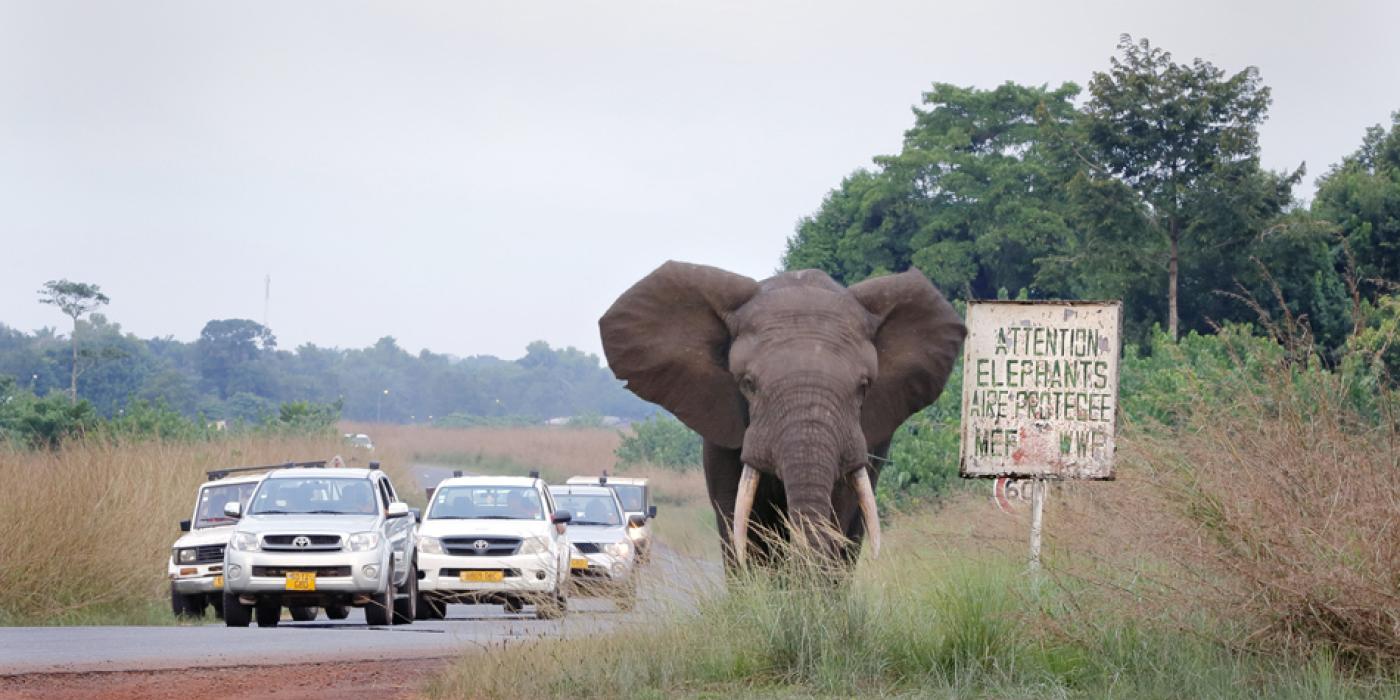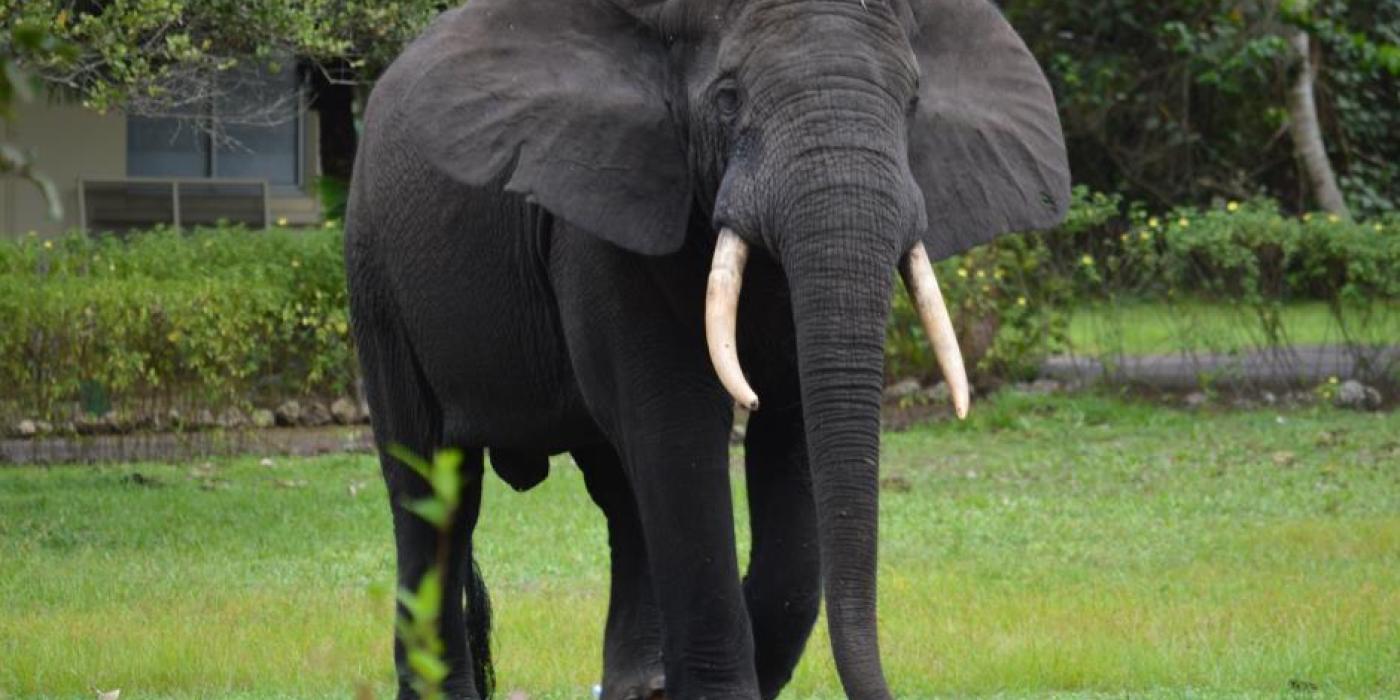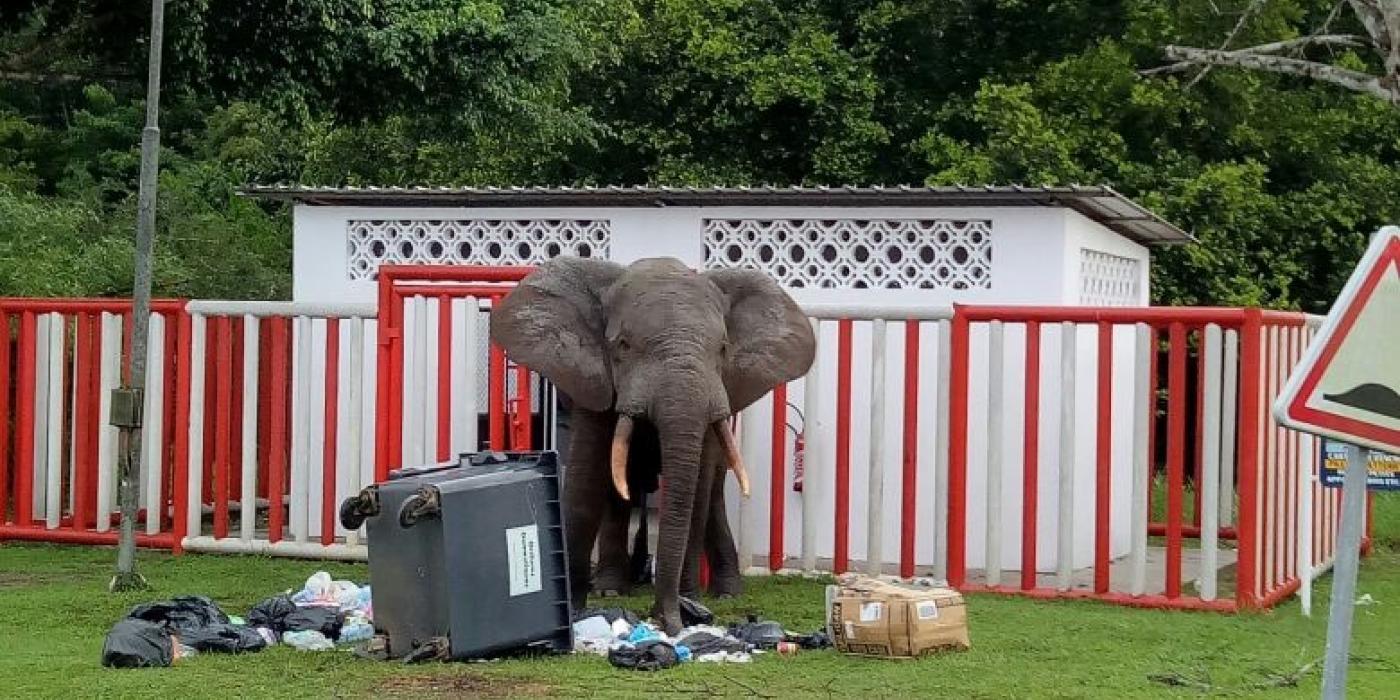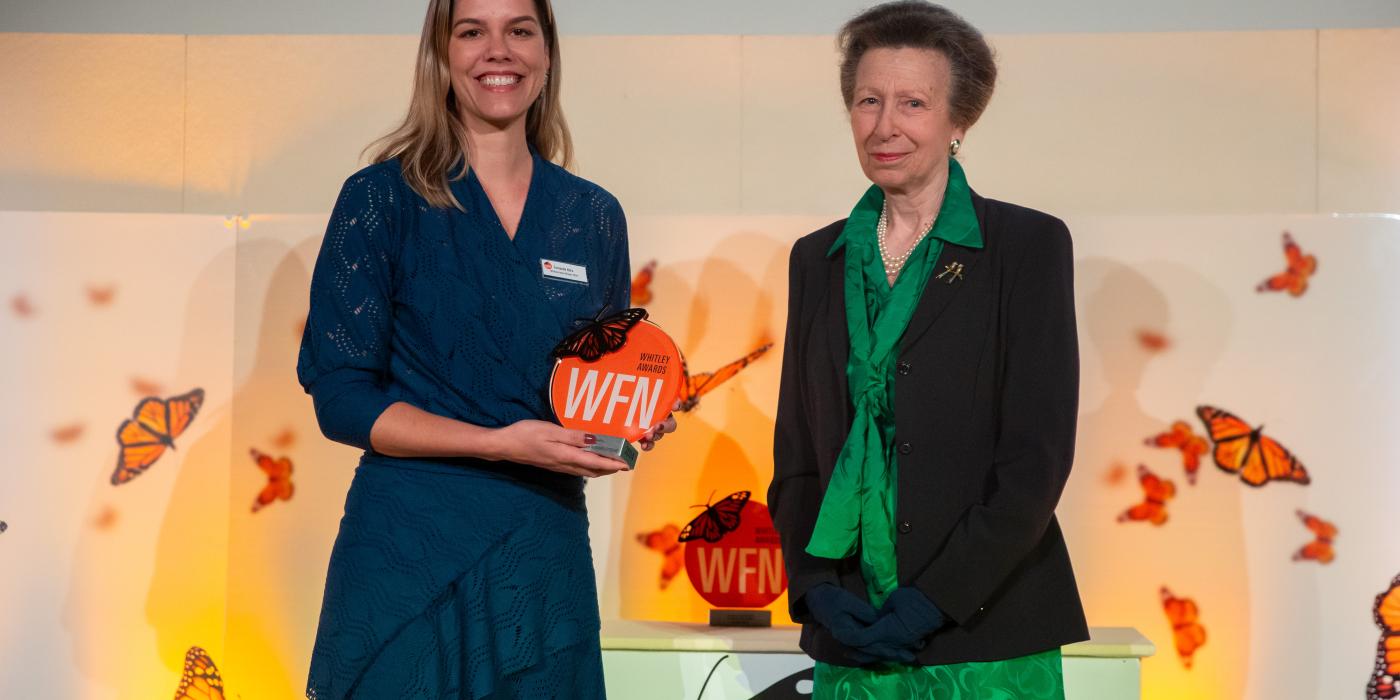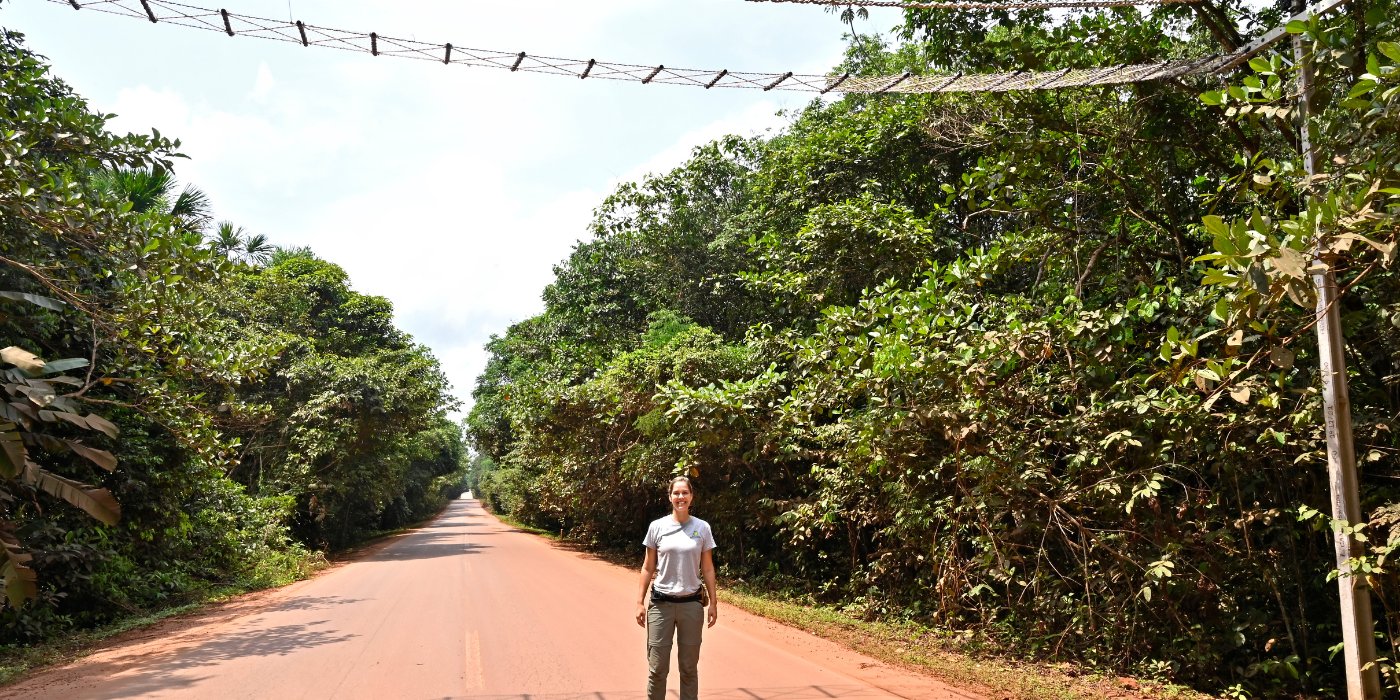Saving Gabon’s Forest Elephants
Mangos are on the menu for Gabon’s forest elephants! Every fall, the pachyderms venture onto Shell Gabon’s Yenzi camp in search of the delicious fruit, putting both animals and humans in jeopardy. Smithsonian Conservation Biology Institute scientists Angelique Todd, Mireille Johnson and Alfonso Alonso from the Center for Conservation and Sustainability are helping the camp’s staff manage and safely share the land on which both species depend.
Why study Gabon’s forest elephants?
Unlike the elephants in Kenya and Tanzania that live on the Savannah and are quite easy to spot, forest elephants are much more elusive. To hear them move through the forest, you would think that they walk on their tiptoes, they are so quiet and stealthy! Because tracking them is so difficult, this species remains rather mysterious to scientists and even to the local people.
The opportunity to study forest elephants and learn more about their ecology and behavior is really exciting not only for the Center for Conservation and Sustainability but also for the conservation community as a whole.
How are forest elephants faring compared to their Savannah counterparts?
Gabon is one of the last strongholds for forest elephants, harboring up to half of the entire population. In areas of low hunting, it is an excellent example of how elephants can thrive when they are not faced with competition for space, habitat, food or other resources.
The town of Gamba—home to approx. 10,000 people—is surrounded by a mosaic of forest and Savannah that form a protected area complex. This area includes the Moukalaba-Doudou and the Loango National Parks. The government of Gabon has enacted strict policies to protect the wildlife, but the challenges are still great. Gabon’s network of national parks cover 10 percent of the country, and this habitat is vital for species’ survival. For now, the elephant population in the Southwest part of the country appears to be in good shape.
Several years ago, we placed satellite-tracking collars on a few elephants in the corridor between the Gamba Complexes’ National Parks, thinking that the elephants would travel between the two. Imagine our surprise when we discovered that they did not move the large distances we anticipated! The forest elephants that we tagged found all the food, mates and other necessities in a relatively small area, with no need to move further beyond.
Why do humans and elephants cross paths in Gabon?
When Yenzi camp (the Shell Gabon residential area) was built more than 50 years ago, the founders planted mango trees throughout. Now that the trees are big, beautiful and mature, the delicious mangoes are too great a temptation for the elephants! Elephants have excellent memory—they know precisely where they can feed on an abundance of mango trees that fruit every year in October, November and December.
Our camera traps have shown that elephants of all ages and sexes come to the residential camp to eat mangoes. Our ability to identify the elephants—if they are newcomers or return visitors—will help us best advise our colleagues on how to manage the situation.
But it isn’t just Yenzi’s mango trees that are attracting elephants. They go onto farm lands and eat the crops, essentially hindering the farmers’ livelihoods. Two questions that our Gabon Biodiversity Project is trying to answer are: what factors motivate elephants to emerge from the forest, and how can we reduce the potential for human-elephant conflict? The underlying goal of this issue is that the farmers understand that the elephants are essential to the maintenance of the forest on which they depend and share. It is therefore vital that we find ways to promote co-existence such as effective deterrent methods and careful land-use planning.
What advice do you give to people who live and work among the elephants?
One of our main objectives is to teach our colleagues how to be safe when elephants are in the vicinity. To put it simply, a forest elephant’s place is in the forest. However, it can be difficult to deter an animal from visiting an area where there is a wealth of attractive food. Once such elephant, a male named Tchibanga, discovered where the camp collects its garbage. He would root through the garbage, picking and choosing the goodies he wanted to eat. Even when we put a bolt on the gate, Tchibanga was so clever he figured out how to open it! So, we had to develop a special elephant-proof lock to secure the trash and deter Tchibanga and other elephants from accessing the garbage.
Part of the knowledge that we impart on our colleagues is that elephants eat a tremendous amount of food every day. The less food they find accessible in areas inhabited by people, the more inclined they will be to remain in the forest.
This story appears in the May 2017 issue of National Zoo News. Learn more about the Center for Conservation and Sustainability.
